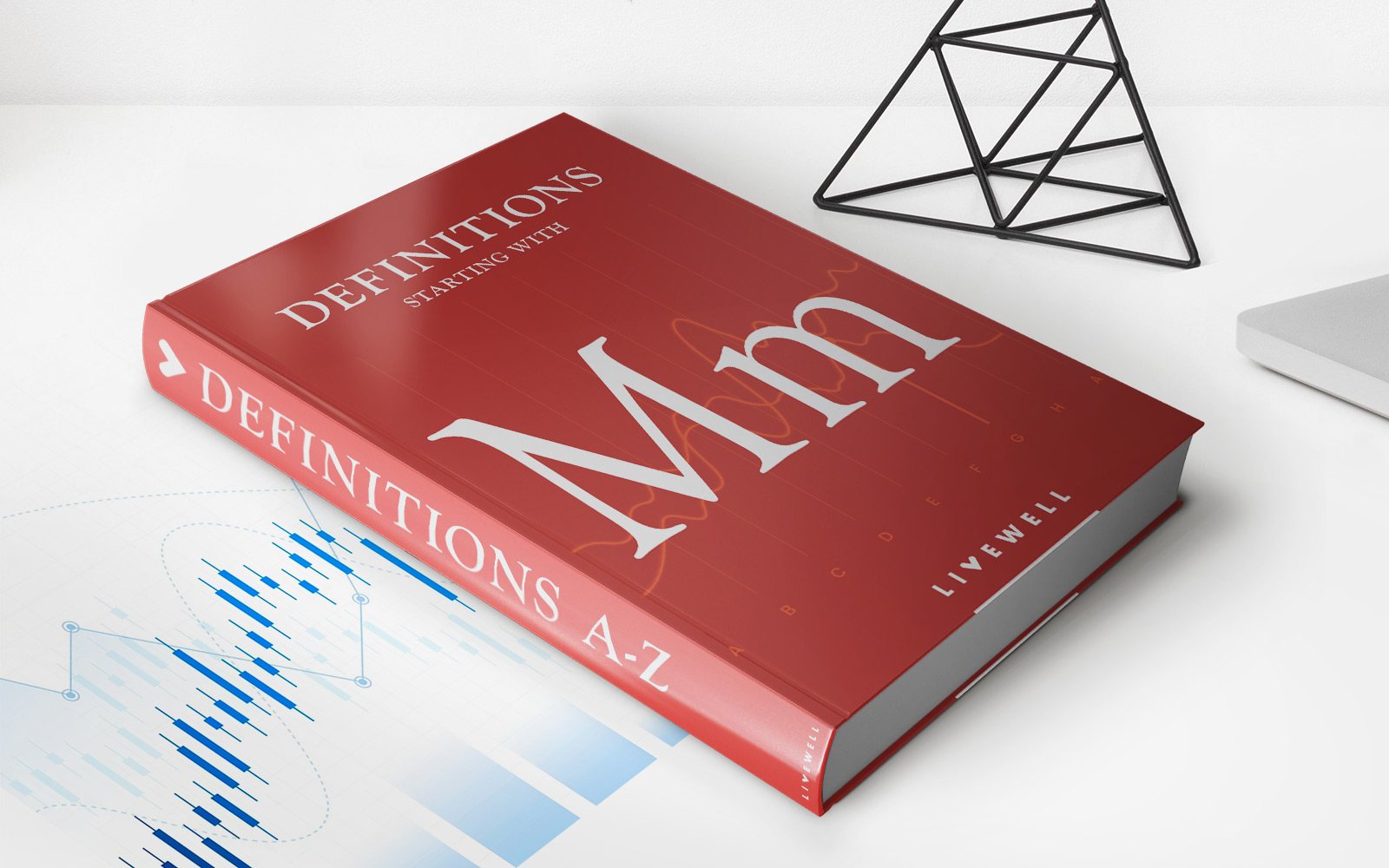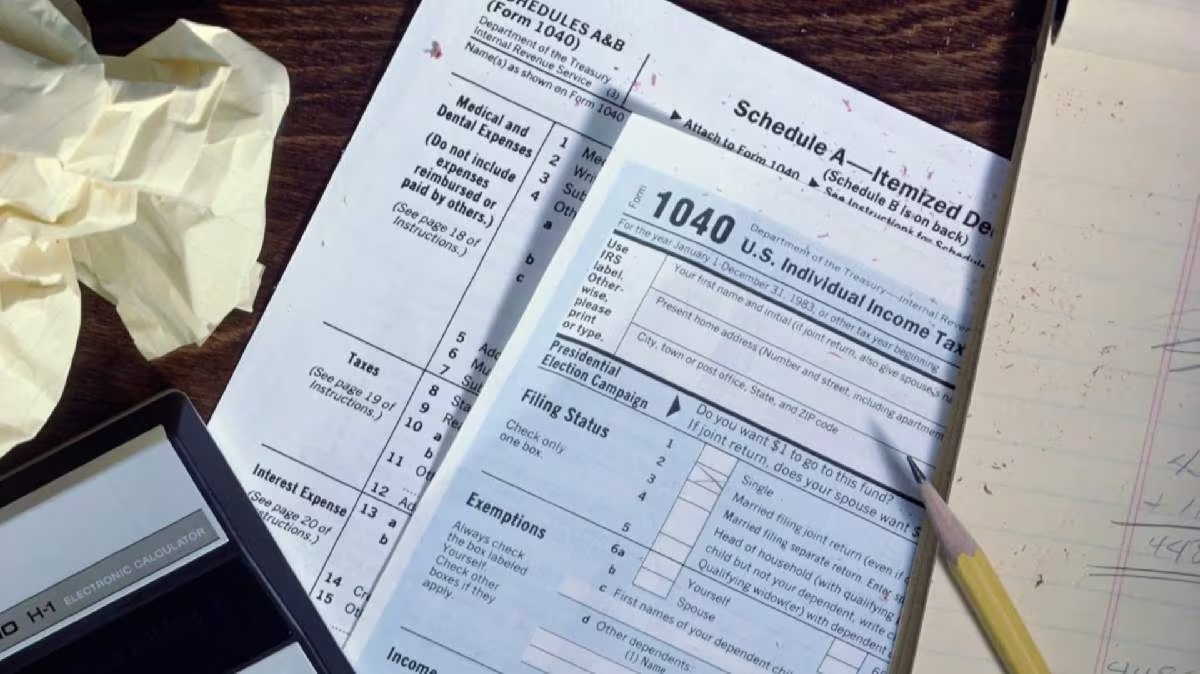

Finance
How Does A Certificates Of Deposit Work?
Modified: December 29, 2023
Learn how certificates of deposit (CDs) work in the finance industry and grow your savings with fixed interest rates and guaranteed returns. Start investing today!
(Many of the links in this article redirect to a specific reviewed product. Your purchase of these products through affiliate links helps to generate commission for LiveWell, at no extra cost. Learn more)
Table of Contents
Introduction
A Certificate of Deposit, commonly known as a CD, is a financial instrument that allows individuals to invest their money for a fixed period of time while earning a predetermined interest rate. CDs are offered by banks and credit unions and are considered to be a low-risk investment option. They provide a guaranteed return on investment and are a popular choice among conservative investors who prioritize the preservation of their principal amount.
CDs have been around for decades and have been a favored investment option for those looking for a secure way to grow their savings. They offer a higher interest rate compared to traditional savings accounts and are often seen as an attractive alternative to riskier investment options such as stocks or bonds.
CDs are a form of time deposit, meaning that the money invested is locked in for a specific term, which can range from a few months to several years. During this term, the money cannot be withdrawn without incurring a penalty. This feature of CDs makes them an ideal investment for individuals who have a specific future financial goal in mind and do not require immediate access to their funds.
In this article, we will explore the characteristics of CDs, how they work, the types of CDs available, and the benefits and considerations of investing in them. Whether you are new to the world of investing or a seasoned investor, understanding how CDs function can help you make informed decisions and maximize your returns.
What is a Certificate of Deposit (CD)?
A Certificate of Deposit (CD) is a financial instrument offered by banks and credit unions that allows individuals to deposit money for a specified period of time, typically ranging from a few months to several years. In return, the individual earns a fixed interest rate on their investment. CDs are considered to be a safe and low-risk investment option because they are backed by the financial institution that offers them.
When you open a CD, you agree to keep your money invested for the duration of the term, and in exchange, the financial institution guarantees the return of your investment along with the agreed-upon interest. The interest rate on a CD is fixed, meaning it remains the same throughout the term of the CD, regardless of any changes in the market interest rates.
CDs are considered to be a conservative investment option, as they provide a guaranteed return and are insured by the Federal Deposit Insurance Corporation (FDIC) for up to $250,000 per depositor, per insured bank. This means that even if the bank fails, your principal amount is protected up to the insured limit.
CDs offer a higher interest rate compared to traditional savings accounts because the money is locked in for a specific period, providing the financial institution with a stable source of funding. The longer the term of the CD, the higher the interest rate tends to be. However, it is important to note that accessing the funds before the maturity date may result in a penalty, such as losing a portion of the interest earned or incurring early withdrawal fees.
CDs are popular among individuals who have a low tolerance for risk and are looking for a safe way to grow their savings. They are particularly appealing to those who have a specific financial goal in mind and do not require immediate access to their funds. Whether it is saving for a down payment on a house, funding a child’s education, or preparing for retirement, CDs can help individuals achieve their financial objectives.
Characteristics of a CD
Certificates of Deposit (CDs) have several key characteristics that make them unique from other financial instruments. Understanding these characteristics can help individuals make informed decisions when considering investing in CDs. Here are some important features to consider:
- Fixed Term: CDs have a predetermined term or maturity period, typically ranging from a few months to several years. During this time, the money invested in the CD cannot be withdrawn without incurring penalties. This fixed term allows individuals to plan and set specific financial goals.
- Fixed Interest Rate: CDs offer a fixed interest rate, which means the rate remains constant throughout the term of the CD. This provides certainty and predictability in terms of the return earned on the investment.
- Guaranteed Return: One of the main advantages of investing in CDs is the guarantee of principal and interest. As long as the CD is held until maturity, the financial institution guarantees the return of the original investment amount, along with the accumulated interest.
- Low Risk: CDs are considered to be low-risk investments because they are typically offered by banks and credit unions that are insured by the FDIC or the National Credit Union Administration (NCUA). This means that even if the financial institution fails, a certain amount of the investment is protected.
- Higher Interest Rates: Compared to traditional savings accounts, CDs tend to offer higher interest rates. The longer the term of the CD, the higher the interest rate tends to be. This higher rate makes CDs an attractive option for individuals looking to maximize their returns on low-risk investments.
It is important to note that while CDs offer stability and security, they may not offer the same level of flexibility and liquidity as other investment options. Once the money is invested in a CD, accessing it before the maturity date can result in penalties and loss of interest earnings. Therefore, individuals should carefully consider their financial needs and goals before investing in a CD.
How Does a CD Work?
Understanding how a Certificate of Deposit (CD) works is key to making informed decisions when investing in them. Here is a breakdown of the process:
- Opening a CD: To open a CD, individuals need to visit a bank or credit union and fill out an application. The application will require personal information, such as name, address, social security number, and the amount to be invested.
- Choosing the Term: Individuals must select the term or duration of the CD. It can range from a few months to several years, depending on the financial institution’s offerings. The term determines the length of time the money is locked in and the interest rate earned.
- Agreeing to Terms: Once the term and investment amount are selected, individuals must agree to the terms and conditions set by the financial institution. This includes acknowledging any penalties for early withdrawal or changes to the interest rate.
- Depositing the Funds: After agreeing to the terms, individuals must deposit the agreed-upon amount into the CD account. This can be done through a transfer from another account, a check, or in some cases, cash.
- Earning Interest: Throughout the term of the CD, interest accrues on the invested amount. The interest rate is predetermined at the time of opening the CD and remains fixed until maturity. The interest can be paid out periodically or compounded and added to the principal amount.
- Maturity: At the end of the CD term, it reaches its maturity date. At this point, individuals have several options. They can choose to withdraw the entire amount, including the accumulated interest, renew the CD for another term, or transfer the funds to another account.
It is important to note that withdrawing funds before the maturity date may result in penalties, such as forfeiting a portion of the earned interest or paying early withdrawal fees. Therefore, individuals should carefully consider their financial needs and timing before investing in a CD.
CDs provide a secure way to grow savings and earn a fixed return on investment. They are suitable for individuals with specific financial goals and a low tolerance for risk. By understanding how CDs work and considering the terms and conditions, individuals can make informed decisions to optimize their returns.
Steps to Open a CD Account
Opening a Certificate of Deposit (CD) account is a straightforward process that typically involves several key steps. Here’s a guide on how to open a CD account:
- Researching Financial Institutions: Start by researching different banks or credit unions that offer CD accounts. Consider factors such as interest rates, terms, penalties, and customer reviews to determine which institution suits your needs.
- Comparing CD Options: Once you’ve shortlisted a few financial institutions, compare their CD options. Look at the minimum deposit requirements, the term lengths offered, and the interest rates available. Choose a CD that aligns with your financial goals and investment preferences.
- Gathering Required Documents: Before visiting the financial institution, gather the necessary documents. Typically, you’ll need identification documents, such as a driver’s license or passport, proof of address, and your social security number or tax identification number.
- Visiting the Financial Institution: Visit the chosen financial institution’s branch in person or contact them online to inquire about opening a CD account. Schedule an appointment if needed or follow the instructions provided.
- Filling Out the Application: At the financial institution, you’ll be provided with an application form to open a CD account. Fill out the necessary details accurately, including personal information, investment amount, desired term, and any other required information.
- Submitting the Application: After completing the application, submit it to a bank representative or through the institution’s online platform. If applicable, provide the deposit amount for the CD account. Ensure that all information is correct and verify any terms or conditions.
- Confirmation and Receipt: Once the application is submitted, you’ll receive confirmation of your CD account opening. This may come in the form of a printed receipt or an email confirmation. Keep this for your records.
- Managing Your CD: After opening the CD account, you can manage it through various channels, such as online banking or visiting the branch. Keep track of the maturity date, interest payments, and any account-related information.
Remember, opening a CD account requires careful consideration of factors such as the term length, interest rates, and potential penalties for early withdrawals. Take the time to research and compare CD options to find the best fit for your financial goals. Once opened, monitor your CD account regularly and take note of maturity dates to make informed decisions about your investments.
Types of CD
Certificates of Deposit (CDs) come in different variations to cater to the diverse investment needs and preferences of individuals. Here are some common types of CDs:
- Traditional CD: A traditional CD has a fixed term and interest rate. The term can range from a few months to several years, and the interest rate remains the same throughout the duration of the CD. This type of CD is ideal for individuals who want a stable and predictable return on their investment.
- Callable CD: Callable CDs allow the issuing institution to redeem the CD before the maturity date. This provides the institution with flexibility, but it introduces some level of uncertainty for the investor. Callable CDs typically offer higher interest rates to compensate for the risk associated with possible early redemption.
- Bump-up CD: A bump-up CD gives the investor the option to increase the interest rate on their CD once during the term. This type of CD is beneficial when interest rates are expected to rise. It allows investors to maximize their returns without having to open a new CD at a higher rate.
- Jumbo CD: Jumbo CDs require a larger minimum deposit compared to traditional CDs. This type of CD is typically offered to investors with sizable deposits. Jumbo CDs often offer higher interest rates due to the larger investment amount.
- Brokered CD: Brokered CDs are purchased through brokerage firms rather than directly from a bank or credit union. They offer a wider range of options from different financial institutions. Brokered CDs have the advantage of providing diversity in the investor’s CD portfolio.
- Step-up CD: Step-up CDs have a predetermined schedule where the interest rate increases at regular intervals during the term. This can provide investors with the benefit of earning higher yields over time, especially if interest rates are expected to rise.
- No-penalty CD: No-penalty CDs allow investors to withdraw funds before the maturity date without incurring a penalty. This type of CD offers flexibility for individuals who may need access to their money before the term ends. However, no-penalty CDs may have slightly lower interest rates compared to traditional CDs.
Each type of CD has its own advantages and considerations. When choosing a CD, it is essential to consider your risk tolerance, financial goals, and the current market conditions. Understanding the various types of CDs available can help you select the one that aligns with your investment needs and objectives.
Benefits of Investing in CDs
Investing in Certificates of Deposit (CDs) offers several advantages that make them an appealing choice for many investors. Here are some key benefits of investing in CDs:
- Guaranteed Return: One of the primary benefits of CDs is the guarantee of principal and interest. As long as the CD is held until maturity, the financial institution guarantees the return of the initial investment amount, along with the accumulated interest. This provides investors with peace of mind and a guaranteed return on their money.
- Low Risk: CDs are considered to be low-risk investments. They are typically offered by banks and credit unions that are insured by the Federal Deposit Insurance Corporation (FDIC) or the National Credit Union Administration (NCUA). This means that even if the financial institution fails, a certain amount of the investment is protected.
- Stable and Predictable Income: The fixed interest rate on CDs provides investors with a stable and predictable income stream. This is particularly beneficial for individuals looking for a steady source of income, such as retirees or those with specific financial goals in mind.
- Higher Interest Rates: CDs often offer higher interest rates compared to traditional savings accounts. This allows investors to earn more on their savings and potentially outpace inflation. The longer the term of the CD, the higher the interest rate tends to be, rewarding individuals for committing their funds for a longer period.
- Flexible Term Options: CDs come with various term lengths, ranging from a few months to several years. This allows investors to choose a term that aligns with their specific financial goals, whether it’s saving for a short-term goal or investing for the long-term.
- Portfolio Diversification: Including CDs in your investment portfolio can provide diversification and balance. CDs offer stability and are considered a conservative investment option. Combining them with other higher-risk investments, such as stocks or bonds, can help mitigate overall portfolio risk.
- Protection against Market Volatility: CDs can serve as a hedge against market volatility. While other investments may experience fluctuations in value due to market conditions, the initial investment in a CD remains protected, providing stability and a sense of security.
It’s important to note that while CDs offer several benefits, they also have limitations, such as restricted access to funds and potential penalties for early withdrawals. It’s essential to assess your financial goals, risk tolerance, and liquidity needs before investing in CDs. By considering these factors, you can determine if CDs are the right investment option for you.
Risks and Considerations
While Certificates of Deposit (CDs) offer several benefits, it is important to be aware of the risks and considerations involved before investing. Here are some key points to keep in mind:
- Limited Liquidity: Once funds are deposited in a CD, they are typically locked in until the maturity date. Withdrawing the money before the term ends may result in penalties, such as forfeiting a portion of the earned interest or paying early withdrawal fees. Therefore, it is crucial to consider your liquidity needs before investing in a CD.
- Opportunity Cost: By investing in a CD, you may miss out on potentially higher returns from other investment options, such as stocks or mutual funds. CDs are considered to be low-risk investments, but they also tend to offer lower returns compared to riskier assets. Assess your financial goals and risk tolerance to determine the right balance between risk and reward.
- Fixed Interest Rates: While the fixed interest rate on a CD provides stability, it can also be a disadvantage when market interest rates rise. If you have locked in a CD at a relatively lower interest rate, you may miss out on the opportunity to earn higher returns if rates increase during the CD’s term. Consider the interest rate environment and your expectations for future rate movements before committing to a CD.
- Inflation Risk: Over the long term, inflation can erode the purchasing power of your CD returns. If the inflation rate exceeds the interest rate earned on the CD, the real value of your investment may decrease in terms of its ability to buy goods and services. It’s important to assess the potential impact of inflation on your overall investment strategy.
- Credit Risk: While CDs are generally considered low-risk investments, there is still a small degree of credit risk involved. It is important to choose reputable financial institutions with solid credit ratings when investing in CDs to minimize the risk of default.
- Insurance Limits: While CDs are typically insured by the Federal Deposit Insurance Corporation (FDIC) or the National Credit Union Administration (NCUA), it is essential to understand the insurance limits. The maximum coverage is $250,000 per depositor, per insured bank or credit union. If your CD investment exceeds this threshold, you may need to diversify across multiple institutions to ensure the protection of your entire investment amount.
Considering these risks and considerations can help you make an informed decision when investing in CDs. Assess your financial goals, risk tolerance, and liquidity needs to determine if CDs are the right investment option for you. It may be beneficial to consult with a financial advisor to tailor your investment strategy to your specific circumstances.
CD Ladder Strategy
The CD ladder strategy is an investment technique that involves spreading your funds across multiple CDs with different maturity dates. This strategy allows you to balance the benefits of higher interest rates on longer-term CDs with the flexibility of accessing a portion of your funds at regular intervals. Here’s how the CD ladder strategy works:
- Selecting CD Terms: Choose a range of CD terms that fit your financial goals and liquidity needs. For example, you could divide your funds into CDs with terms of 6 months, 1 year, 2 years, and 5 years. The number of CDs and the term lengths depend on your preferences and the amount you have to invest.
- Investing at Regular Intervals: Invest a portion of your funds in CDs with different maturity dates. For example, you could invest one-fourth of your funds in each of the CDs mentioned earlier. As each CD matures, reinvest the proceeds into a new CD with the longest term in your ladder.
- Benefitting from Different Interest Rates: By reinvesting the funds from maturing CDs into longer-term CDs, you can take advantage of potentially higher interest rates. Longer-term CDs typically offer higher rates, allowing you to earn more on your investment.
- Creating Liquidity: The CD ladder strategy provides regular access to a portion of your funds as CDs mature at different intervals. This allows you to have liquidity and flexibility to meet your financial needs or take advantage of new investment opportunities.
- Continuing the Cycle: As each CD matures, reinvest the funds into a new CD with the longest term in your ladder. This keeps the ladder cycle going, providing a balance between long-term growth potential and ongoing liquidity.
The CD ladder strategy offers several benefits, including diversification, flexibility, and the potential to maximize returns. It allows you to spread your investment across different interest rate environments and access a portion of your funds at regular intervals without incurring penalties. Additionally, as each CD matures, you have the opportunity to reassess your financial goals and adjust your investment strategy accordingly.
Remember to consider factors like interest rate movements, your financial needs, and any early withdrawal penalties associated with CDs before implementing the CD ladder strategy. By tailoring the strategy to your specific circumstances, you can potentially enhance your returns while maintaining flexibility.
Tax Implications
When investing in Certificates of Deposit (CDs), it’s important to consider the tax implications of your earnings. Here are some key points to keep in mind:
- Interest Income: The interest you earn from CDs is considered taxable income. At the end of each calendar year, the financial institution will provide you with a Form 1099-INT, which outlines the total interest earned on your CDs. You must report this income on your federal and state income tax returns.
- Form of Interest Payment: CDs offer different options for receiving interest payments. You can choose to receive interest payments periodically (monthly, quarterly, or annually), or you can opt for the interest to be added to the principal and paid out at maturity. Regardless of the payment option you choose, the interest earned is still taxable income and must be reported.
- Tax Bracket: The amount of tax you will owe on your CD interest income depends on your tax bracket. The interest income is added to your other sources of income, such as wages or dividends, and taxed at the corresponding tax rate based on your taxable income level. Consult with a tax advisor to understand how CD interest income will affect your overall tax liability.
- Affect on Tax Credits and Deductions: The interest income earned from CDs may affect certain tax credits and deductions. For example, it may impact your eligibility for certain income-based tax credits or phase out certain deductions. It’s important to understand how CD interest income fits into your overall tax picture to accurately plan and manage your tax obligations.
- Early Withdrawal Penalties: If you need to withdraw funds from a CD before its maturity date and incur a penalty, the penalty amount is not tax-deductible. You cannot claim the penalty as a deduction on your taxes.
- State and Local Taxes: In addition to federal taxes, CD interest income is subject to state and local taxes. Each state has its own tax laws and rates, so it’s important to consider the tax implications of CDs at the state and local levels.
To ensure compliance with tax laws and maximize your tax-efficiency, it’s advisable to consult with a tax professional or accountant. They can provide guidance on reporting CD interest income, calculate your tax liability, and help you optimize your overall tax strategy.
Keep in mind that tax laws and regulations can change over time, so it’s important to stay informed about any updates that may impact the taxation of CDs and adjust your financial planning accordingly.
Conclusion
Certificates of Deposit (CDs) are a popular investment option for individuals seeking a low-risk and stable way to grow their savings. With their guaranteed return, fixed interest rates, and insurance protection, CDs offer several benefits for conservative investors looking to preserve their principal and earn a predictable income.
Throughout this article, we have explored the various aspects of CDs, including what they are, how they work, the different types available, and the benefits and considerations of investing in them. We have also discussed the CD ladder strategy and the tax implications associated with CD investments.
CDs provide a secure and reliable investment avenue, particularly for those with specific financial goals and a low tolerance for risk. They allow investors to earn higher interest rates compared to traditional savings accounts while still benefitting from the protection of federal deposit insurance.
It is important to remember that CDs may not be suitable for everyone. They have limitations, such as limited liquidity and potential opportunity costs. Individuals should carefully consider their financial needs, risk tolerance, and investment objectives before committing to CDs.
In conclusion, CDs are a valuable investment option that can play a role in diversifying a portfolio, providing stability, and generating a steady income stream. By understanding the characteristics, risks, and strategies associated with CDs, individuals can make informed decisions to maximize their returns while aligning with their unique financial goals.














